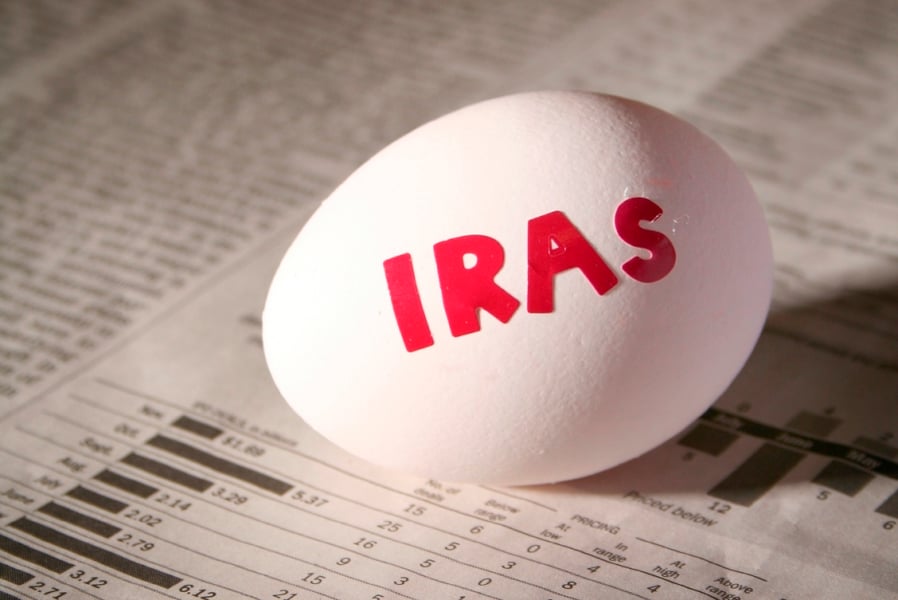When funds are withdrawn from an IRA or Roth IRA, the basis comes out tax-free, but who is tracking the basis information? Advisers can help.
IRA basis is the funds in an IRA that already have been taxed, either as nondeductible IRA contributions or after-tax funds rolled over from plans. Roth IRA contributions and
Roth conversions are all basis since those funds have already been taxed. Tracking IRA basis is necessary to determine the taxation of eventual IRA withdrawals. If basis is not taken into account, tax-free withdrawals can become taxable, meaning the funds will be taxed twice.
IRA basis is required to be tracked on IRS Form 8606, Nondeductible IRAs, which is filed with a client's tax return. Form 8606 keeps a historical cumulative record of IRA basis, but the form is only as good as the input. The form is sometimes missed or ignored, even by CPAs, resulting in IRA basis not being recorded. There is actually a $50 IRS penalty for not filing the form and a $100 penalty for overstating the basis.
In general, nondeductible IRA contributions are easier to keep track of by using virtually any kind of tax software. The IRA nondeductible contribution is either entered or calculated (based on the client's income and plan participation) and automatically entered on Form 8606.
In addition, some clients have after-tax plan funds in their IRA from rollovers. Tax preparation programs won't know this. Credit for these after-tax plan funds must be entered and added to the cumulative IRA basis on Form 8606. Advisers should alert the clients' tax preparers, who otherwise would have no way of knowing this.
Note: IRS Notice 2014-54 (Sept. 18, 2014) allows after-tax plan funds to be converted to Roth IRAs tax-free, so it is unlikely that these after-tax funds will be getting rolled over into traditional IRAs anymore. However, there are still many IRAs that include after-tax plan funds that were rolled into traditional IRAs before this notice that have to be accounted for.
IRA basis also carries over to inherited IRAs. Most beneficiaries and their tax preparers don't know to ask about this. They would need to see the Form 8606 of the person from whom they inherited. Those beneficiaries, too, will begin to file Form 8606 each year to keep track of the basis on their inherited IRA. Advisers should alert IRA beneficiaries about this and protect them from overpaying their taxes.
Traditional IRA distributions that contain basis use a pro rata calculation to determine how much of the withdrawal is taxable and how much is tax-free. The tax-free portion is the percentage of the basis to the total IRA balance (in all traditional IRAs, SEP and SIMPLE IRAs).
Roth IRA basis presents another problem for clients and advisers. Who is keeping track of this? No one. Roth IRA contributions do not go anywhere on the tax return so they often are not tracked, except on the monthly Roth IRA account statements or on the annual tax reporting Form 5498, IRA Contribution Information. Let clients and their tax advisers know that Roth IRA contributions should be entered on the tax program. Even though the Roth contribution doesn't go anywhere on the tax return, most professional tax programs will keep track of the basis and update it each year. Many tax preparers are not aware of this feature, so it would be good to tell them about it.
Roth conversions are reported on Form 8606, so it is more likely that these are tracked.
Why does this matter anyway? It matters if a client wants to withdraw Roth IRA funds early, meaning before the Roth IRA distributions are qualified. Once any Roth IRA is held for five years and the Roth IRA owner is 59 ½ years old, all Roth IRA distributions will be qualified and income tax free. At that point, Roth IRA basis tracking no longer matters. But if the Roth withdrawal is early, then the client and his tax preparer need to know how much of the withdrawal is tax-free basis.
For Roth IRAs, instead of a pro rata calculation, there are ordering rules that determine which Roth funds are withdrawn. The first Roth dollars out are Roth IRA contributions, then Roth conversions and then earnings. For the Roth conversion layer, the conversions come out first in first out, and if the conversion included both pre- and after-tax funds, the pre-tax funds are distributed first. Roth contributions and conversions can always be withdrawn tax-free at any time. However, Roth conversions not held five years are subject to the 10% early distribution penalty if withdrawn before age 59 ½.
Ultimately, like the tax return itself, it is the client's (the taxpayer's) responsibility to keep track of IRA basis. But advisers can help here by providing annual IRA basis information to clients or by keeping clients' basis information on file to assist tax preparers.
Ed Slott, a certified public accountant, created the IRA Leadership Program and Ed Slott's Elite IRA Advisor Group. He can be reached at irahelp.com.







